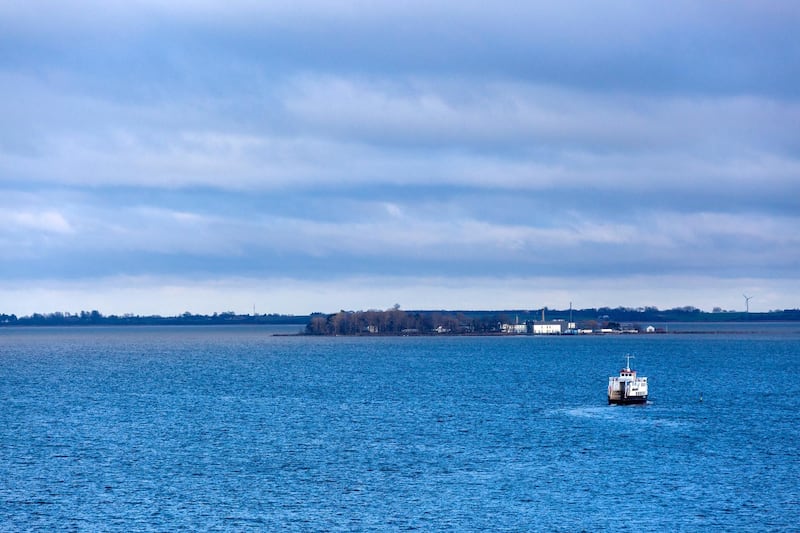Looking out to sea through the winter gloom and Danish sleet, the tiny island of Lindholm looks an inhospitable place, as far from the idealised paradise of swaying palms and yellow sand that it’s possible to be. The Danish government wouldn’t want it any other way.
Buffeted by the grey Baltic Sea, Lindholm was chosen by Copenhagen for people Danish officials want to tuck away and forget – foreigners who have been refused refugee status or asylum but cannot be returned home because they may face torture or execution.
According to government plans announced this month, from 2021 Lindholm will be home to about 100 to 125 people that the country’s anti-immigration party calls “foreign criminals”. They are not meant to like it much.
"There won't be much to do. It's not supposed to be a holiday," Martin Henriksen, a senior official for the Danish People's Party told The National. "Maybe they can paint the houses or help with construction work. Unpaid? Yes."
The rise of the DPP to become Denmark’s second-largest party has been mirrored by increasing government hostility to migrants, and Mr Henriksen is keen for the world to know about it. Previous anti-migrant measures were accompanied by advertisements in foreign media to send a message that Denmark is not laying out the welcome mat.
Despite his party coming third in 2015 national elections, Prime Minister Lars Lokke Rasmussen heads a minority centre-right administration but relies on the DPP to pass legislation. The Lindholm plan is part of a budget package that is set for a parliamentary vote this week.
The seven-acre site is ringed by larger, populated islands of southern Denmark and is just a couple of miles from the tiny port town of Kalvehave.
A ferry service runs regularly through the day to Lindholm carrying scientists and supplies for veterinary research on animal diseases.
Its relative isolation made it an ideal choice to open a research centre in the 1920s but Denmark’s Technical University, which runs the ferry service, is closing the facility and relocating its staff to Copenhagen, a 70-mile drive to the north.
The move cleared the way for the government to step in and rebrand Lindholm, one of more than 400 Danish islands, as a dedicated centre for the unwanted – rejected asylum seekers with criminal records who cannot be sent home for legal reasons.
Under the plan, the island's residents can leave Lindholm during the day but have to remain there overnight. Officials have spoken of pitching ferry tickets at high prices and limiting services to dissuade them from ever leaving the island.
After edging the Ulvsund into its berth at the end of one round trip, ferry master Jan Rongaard – employed by the university – declined to comment on the plans but has expressed concerns for the security of his staff in local media.
The government identified the island's likely inhabitants as “foreign criminals” although those who were convicted of crimes will have served their sentences. They could also include suspected foreign fighters.
“Depriving them of their liberty, isolating them, and stigmatising them will only increase their vulnerability,” said UN human rights chief Michelle Bachelet in her criticism of the scheme.
The plan has been greeted by near universal condemnation in and around the town of Kalvehave.
“It works for viruses. It doesn’t work for people,” said Joachim Brix-Hansen, a local businessman and vocal campaigner against the plans.
Mr Brix-Hansen, 49, lives a couple of hundred metres from the ferry dock but has never visited the island because of the permit system to prevent contamination. “We feel we’ve been forced to accept this because the state of Denmark owns a tiny island where we live.”
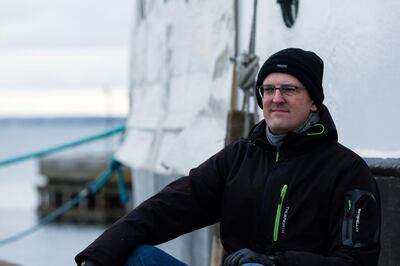
The plan was inspired by Australia’s detention centre on Christmas Island, a tiny rock in the Indian Ocean that holds a group of people who face deportation after serving prison sentences.
In 2016, Mr Henriksen was part of a Danish delegation that went to see how the much-criticised Australian system worked. “Australia treats refugees horribly. But Denmark wants a peek at that playbook,” one article about the visit read.
Mr Henriksen brushed aside concerns that limits to the residents’ movements would fall foul of human rights laws that allows freedom of movement for people who have served their sentences.
Rights groups said they would monitor the project. “A cell is not necessarily a cell with bars on the windows but other conditions that adds up to the equivalent of detention. That’s our concern,” said Louise Holck, of the Danish Human Rights Institute.
She cited a ruling from 1980 when Europe’s human rights courts found against Italy after its authorities moved a suspected mafia leader to a small island, put him under close police supervision and restricted his movements.
Campaigners from one pro-migrant group said they would flout the controls by sending dinghies to collect migrants when the ferry was not running. Mr Henriksen said he would lobby the government to establish an exclusion zone by law.
He added that the government planned to put a small police station on Lindholm to monitor those living there, as well as beefing up the number of officers in Kalvehave in a failed attempt to placate local fears.
“It’s a silly decision and a wrong decision,” said Mikael Smed a police officer and mayor for the region of 46,000 people, a quiet area popular with the retired and tourists. The largest employer makes biscuits.
He is one of the few locals who visited the island as part of an ill-fated lobbying exercise to keep the scientific facility running.
___________________
Read more:
UN's global migration pact draws US ire days before signing
UN to adopt migration pact at meeting hit by withdrawals
___________________
The island’s white buildings, that can be viewed from the mainland, will be razed as part of a major clean-up that will cost an estimated 759 million Danish kronor (Dh421 million).
Mr Smed said the decision to assess, select and budget for Lindholm was decided in 20 days and he expects costs to rise.
"They are using a lot of tax money and not solving the real problem,” said Mr Smed. “I haven’t met anyone who thinks that this is a good idea.”
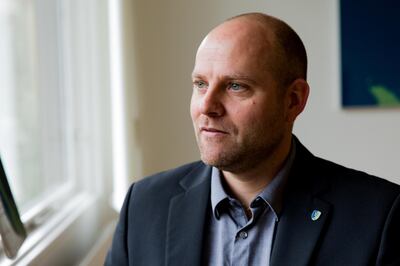
Critics said it was a symbolic policy designed to attract headlines but deflects attention from more significant reforms, including cuts to benefits for asylum seekers.
In a Facebook post after the proposal was announced, the country’s Integration Minister Inger Stojberg said the group must feel “unwanted” in Denmark.
Denmark tightened its laws for immigrants despite UN figures showing that the country has been affected significantly less than neighbouring Germany and Sweden by the 2015 migrant crisis.
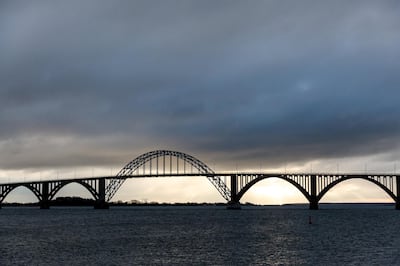
EU figures show that Denmark has received 39,000 asylum seekers or refugees since 2011. Sweden, which has double the population, has had 267,000.
Denmark also pulled out of a UN resettlement programme leading to the lowest number of asylum seekers there in a decade.
The measures include a 2016 law that allowed the country's authorities to seize valuables from migrants to help finance the costs of their stay. The government has also stepped up efforts to deport those whose applications are rejected.
Mr Henriksen said the island plan was for the 20 per cent of failed applicants who could not be removed and are currently held in three other centres. “If it were up to us, they would stay until their dying days on the island or just decide by themselves to leave,” said Mr Henriksen.
Professor Peter Nedergaard, a political scientist at Copenhagen University, said that the measure was wrongly viewed as part of a wider anti-migrant agenda. “If you …. interview civil servants they simply do not recognise this picture. Denmark is a very pragmatic country. If we have a problem, we ask: ‘How do we solve it?'”
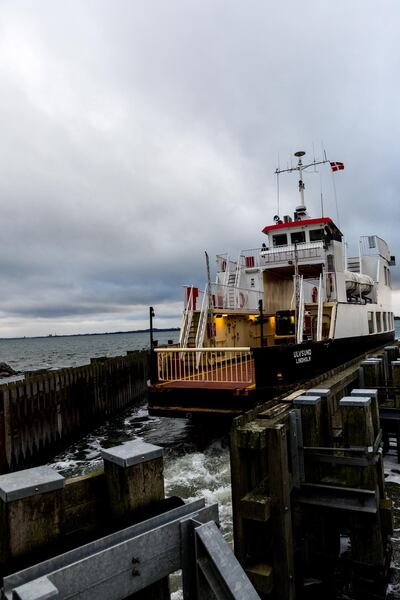
In Kalvehave, population 2,000, officials have vowed to fight the government’s plans. Flyers advertising a meeting to allow residents to voice their views were posted around the town. Officials had hoped that they could turn the town with its small harbour into a thriving tourist centre, with Lindholm transformed into a nature sanctuary or artists' retreat.
Members of the local liberal party gathered on Tuesday at the community centre on the harbour to plan their next move, but senior officials unwillingly accepted that the government had the numbers to push the plan through.
“Will it happen?” said Sven-Erik Petersen, a party official. “That’s the one question we don’t like to answer.”
